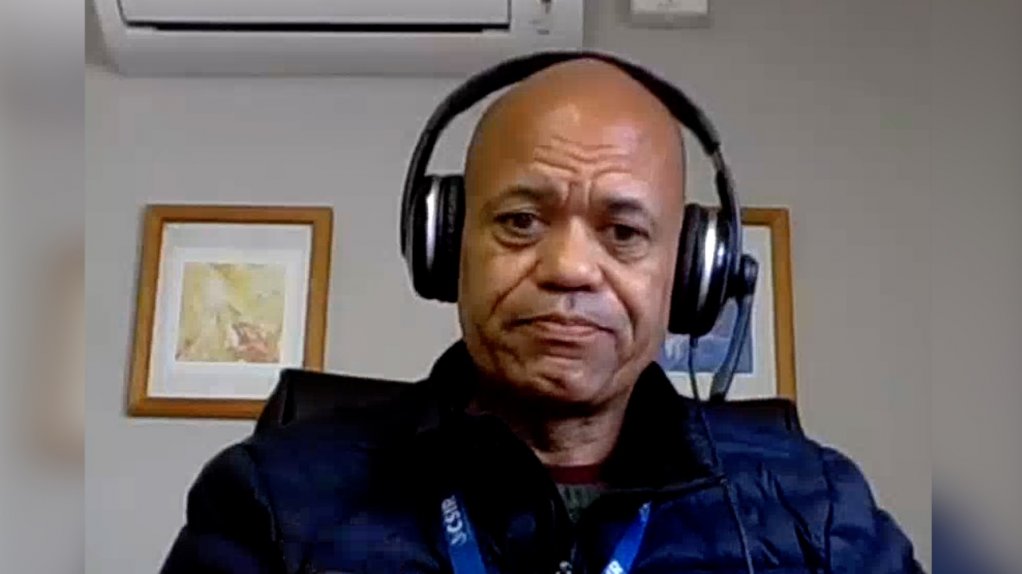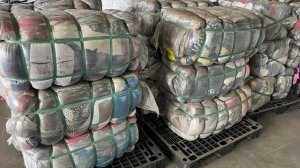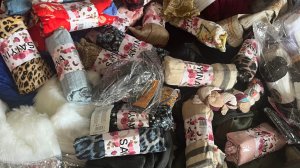

Pilot possibly a template for textiles recycling



NCPC-SA project manager Andre Page discusses the CTFL waste management project recently undertaken by the NCPC-SA
READY TO RECYCLE Materials from the pilot project were repurposed as clothes and rags
The successful completion of a clothing, textile, footwear and leather (CTFL) waste disposal pilot project, managed by national support programme National Cleaner Production Centre South Africa (NCPC-SA), creates opportunity for similar projects, says NCPC-SA project manager Andre Page.
The project, initially conceptualised by national tax and customs service administrator South African Revenue Service (Sars), and the Department of Trade, Industry and Competition (dtic), aimed to destroy and recycle CTFL goods that had been seized by Sars as illegal imports and manufactured end-products.
The project was planned for a year and had a target of recycling about 1 500 t of clothing and textiles waste, but “we eventually extended the project by a further six months, resulting in the successful recycling of about 1 800 t of waste instead”, Page explains.
A total of 61 000 kg of footwear and leather could not be recycled and were destroyed.
The model used for the project aimed to create jobs and minimise waste, offering a suitable opportunity for Sars and the dtic to address the problems of illicit goods and the destruction thereof while benefiting the economy.
The pilot project was conceived as a means of fast-tracking economic growth on the back of the localisation strategy afoot in the CTFL sector, under the auspices of the dtic.
“The collaboration between the dtic and other national entities led to the formation of the Inter-Agency Working Group (IAWG), which overseas projects like this, and to which the NCPC-SA submitted it findings,” adds Page.
The IAWG decided to target the three State warehouses – ISCOR, OR Tambo International Airport (ORTIA), and Kaserne, in Gauteng, for the pilot project, owing to the sizable volumes of seized CTFL goods already in storage at those locations. Their proximity to processing facilities was also considered.
An executive decision was made to move the CTFL goods at ORTIA to Kaserne to streamline efficiencies when processing the CTFL.
Page points out that another objective of the project was to develop the standard operating procedures for Sars in ensuring that seized CTFL goods are dismantled or destroyed in a sustainable and circular fashion.
The methods and approach used in the pilot project ensured that the shredded materials and accessories were reused elsewhere in a transparent and traceable manner, with post-disposal reporting obligations that offer a full audit trail on mass balances for such transactions.
He adds that, to develop strong public– private partnerships and effective relationships in pursuit of a cleaner environment, the project needed to be transparent and produce tangible and positive results.
The Devil’s in the Details
The CTFL goods were subjected to a series of phases. For example, the bales of clothing were weighed and separated before the clothing was dismantled and stripped of nonrecyclable elements such as clips, buttons, eyelets and laces, and then sorted into similar categories based on the material.
The clothing and materials were then shredded by cutting machines specifically designed for textile processing. The machines use smooth blades that protect the fingers and hands of operators.
The materials were then re-baled and prepared for removal from the warehouse, along with destruction certificates issued to Sars to confirm the compliance of every consignment.
Textile recycling specialist Connacher, located in KwaZulu-Natal, participated in the pilot project, because it owned more modernised and advanced equipment that could process large volumes of textile products.
Connacher was also one of the end-users of the project, and this helped to reduce its import volumes of textile waste.
The NCPC-SA states that Connacher converted most of the textile waste into recycled fibre specifically for the insulation, bedding, motor, geo-textiles and non-woven industries.
Meanwhile, about 23% of the waste was reused in the production of cloths and/or rags by fabric manufacturer Wiper Fibers, in Germiston.
“A report has been submitted to the IAWG for consideration to replicate the project in the future,” concludes Page.




